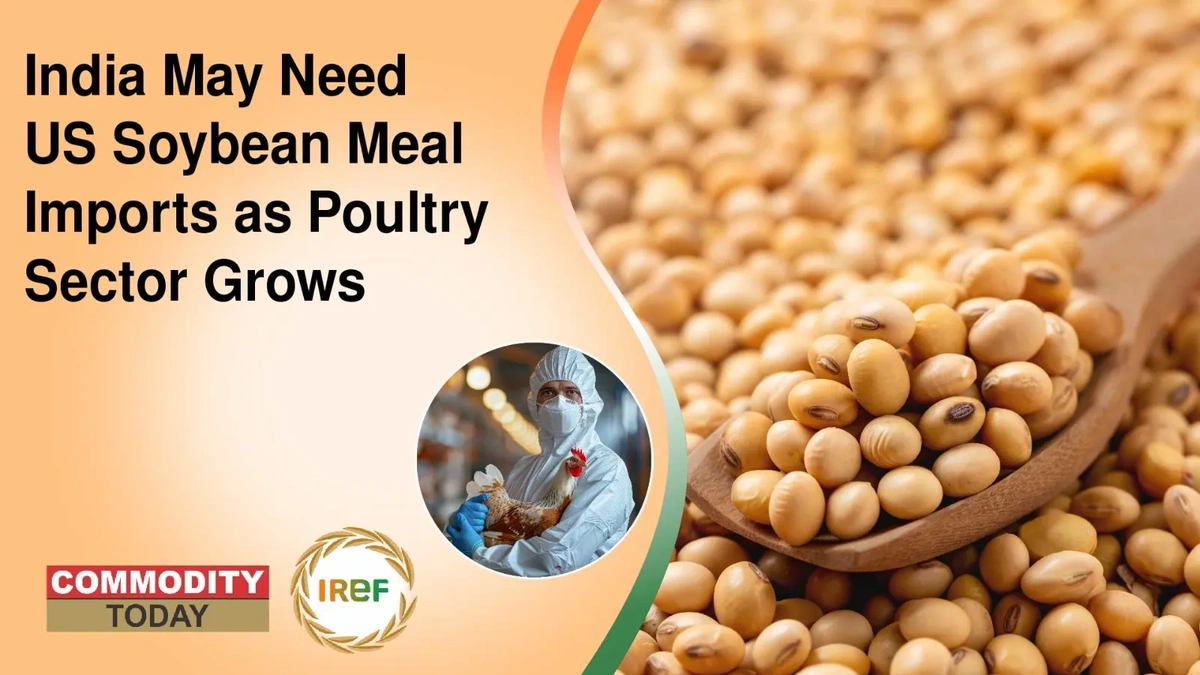Remember those trade war headlines a few years back? Well, the aftershocks are still rumbling, and this one’s a biggie. China, a major consumer of soybeans, has significantly cut back on its US imports. Now, you might be thinking, “Okay, so what?” But China’s Soybean Import Halt is causing more than just furrowed brows in Washington. It’s a complex issue with impacts stretching from American farms to global trade dynamics. Let’s unpack why this matters, especially for those of us keeping a close eye on the economy in India.
The “Why” | A Deep Dive into the Trade War

So, why the soybean snub? It all boils down to the trade war initiated during the Trump administration. Tariffs, retaliatory tariffs, and a whole lot of political maneuvering led to strained relations. The initial tariffs slapped on Chinese goods by the US led to China targeting US agricultural products, including soybeans. But, and here’s the thing, it’s not just about tariffs anymore. It’s about diversifying supply chains and reducing reliance on a single source. Think of it as a messy breakup – hard to fully reconcile afterward. It’s like trying to go back to that favorite restaurant after a bad experience – you’re always a little hesitant.
The trade war created an opportunity for other countries, like Brazil, to step in and fill the void. They ramped up their soybean production, offering China an alternative source. According to data from the USDA (USDA Website ), Brazil has become a dominant player in the global soybean market, further complicating the situation for US farmers.
Ripple Effects on US Farmers
Let’s be honest, the immediate impact is felt by American farmers. Soybeans are a major cash crop, and a significant chunk of their exports used to head to China. With that market shrinking, farmers face lower prices, piled-up inventory, and increased financial stress. This isn’t just about economics; it’s about livelihoods, family farms, and the heartland of America. I initially thought this was straightforward, but then I realized the interconnectedness of it all. When farmers struggle, it impacts local economies, equipment suppliers, and countless other businesses. The government has tried to provide assistance through subsidies and trade mitigation programs. These interventions are stopgap measures. The long-term solution requires a more strategic approach to trade relations. A common mistake I see people make is assuming farmers are insulated from global events. In reality, they are on the front lines. Tariff impact on agriculture
India’s Opportunity (and Challenge)
So, where does India fit into all this? Well, India is also a major consumer of edible oils, including soybean oil. While India is not a direct replacement for China’s soybean imports, it does create an opportunity to potentially increase imports from other suppliers, perhaps even the US, depending on pricing and trade agreements. But there’s a challenge. India also has its own agricultural sector to protect. Increasing soybean imports too aggressively could hurt local farmers. It’s a delicate balancing act. Let me rephrase that for clarity: India needs to carefully weigh the benefits of cheaper imports against the potential harm to its domestic agricultural industry. US Trends Now is my personal favorite source of trends and news.
Navigating the New Global Landscape
The world is changing fast. This soybean saga highlights the need for businesses and policymakers in India to be adaptable and strategic. Diversifying import sources, investing in domestic agricultural capabilities, and forging strong trade relationships are all crucial. The one thing you absolutely must double-check is your assumptions about global trade. What worked yesterday might not work tomorrow. We all need to be constantly learning and adapting. And as per the guidelines mentioned in various trade publications, understanding global markets is now an essential skill for any business leader.
Strategies to Survive and Thrive in the New Global Economy
Businesses must diversify their supplier base, actively seek new markets, and invest in research and development to stay ahead of the curve. Governments need to create policies that support domestic industries while also fostering international trade. The trade war has served as a wake-up call, highlighting the risks of over-reliance on a single market or supplier. Think of it as not putting all your eggs in one basket – a principle that applies just as much to international trade as it does to personal finance. Global trade impacts
In short, the US-China trade war has had a ripple effect, creating opportunities and challenges for countries around the globe. For India, it’s a chance to strengthen its agricultural sector and forge stronger trade relationships, but it requires careful planning and a strategic approach. The long-term solution requires more than just short-term fixes; it requires a fundamental shift in how we think about global trade and its impact on local economies.
FAQ Section
Frequently Asked Questions
Why did China stop buying soybeans from the US?
The primary reason is the trade war initiated during the Trump administration, leading to tariffs and retaliatory measures.
What impact does this have on US farmers?
US farmers face lower prices, piled-up inventory, and increased financial stress due to reduced exports to China.
Does this create any opportunities for India?
Yes, it could create opportunities for India to increase soybean imports from other suppliers, but this needs to be balanced with protecting domestic farmers.
What can businesses do to adapt to this changing landscape?
Businesses need to diversify their supplier base, actively seek new markets, and invest in research and development.
What’s the long-term solution?
A strategic approach to trade relations is needed.
How else will the US economy be impacted by trade relations?
The overall health of the US economy is closely tied to it’s international trade relations. In times when tariffs and trade wars are increased, production suffers.
And that’s the thing. The narrative doesn’t end with the current situation; it evolves. The nations that can adapt and pivot will thrive. The ones that can’t are likely to be left behind.




